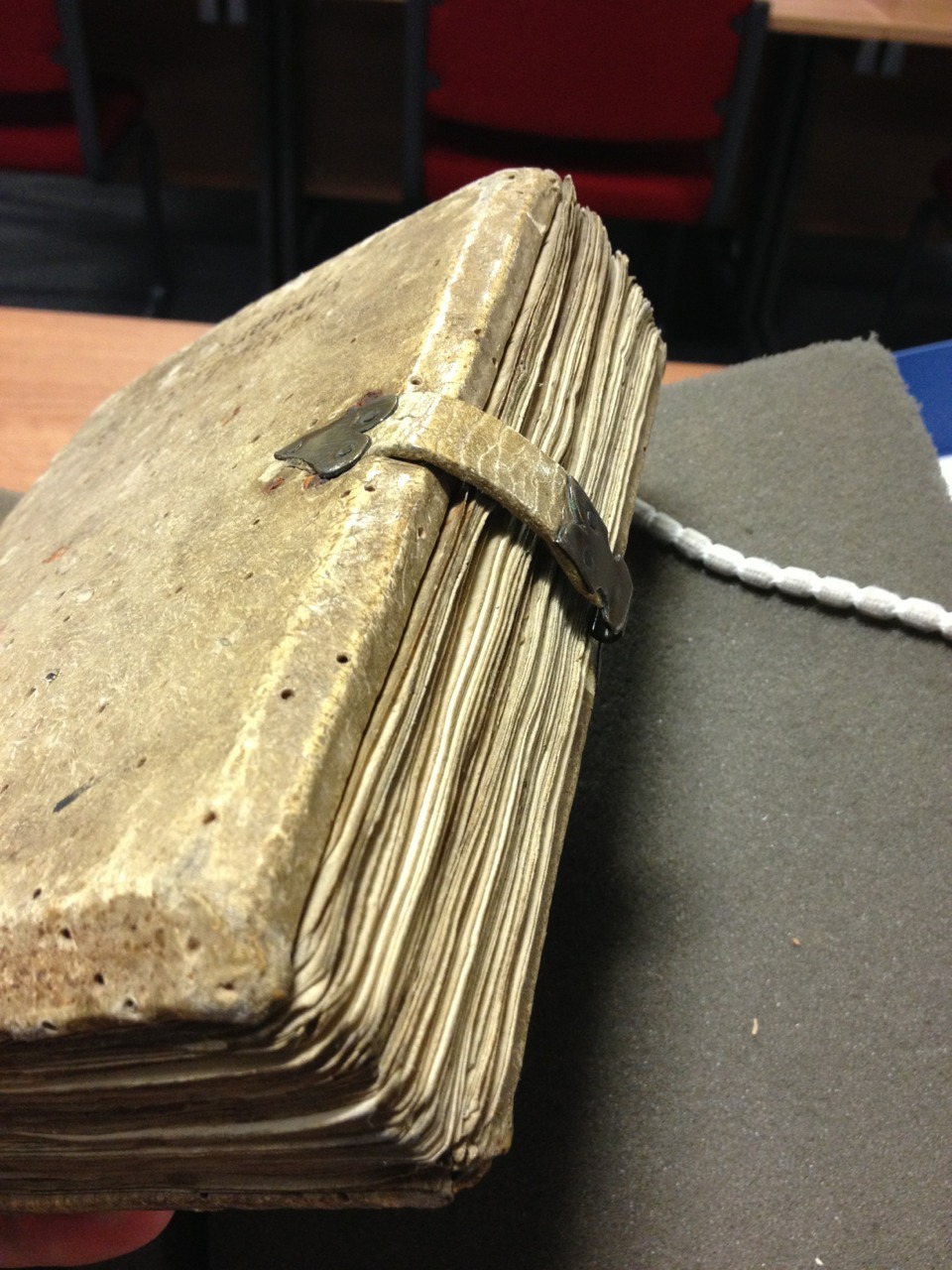

While the stowaways are normally hidden from our eyes, we sometimes get to meet them face to face when a binding is damaged (Fig. This recycling process – plain-old slicing and dicing, really – was common practice, old-fashioned as handwritten books had become after the invention of print. In fact, medieval pages are found in as many as one in five bindings of printed books from the sixteenth and seventeenth centuries. The fragments were placed inside bindings to reinforce the bookblock and to provide support for the boards (see this post I wrote about it, and this one as well).
Medieval manuscripts binding clasps full#

One relevant binding detail that I learned from Frank Mowery, formerly the Head of Conservation at the Folger, currently Rare Bindings Specialist and the man behind the new Bindings Image Collection: clasps on continental bindings have the catch on the upper cover and the hasp on the lower, as in the ones I’ve featured here. INC R8 vol.2 clasp catchĪnd if you look carefully at the tooling, you’ll see that the scrolls around the border repeat the “ave maria”: tooling of "ave maria" gratia” (the rivets obscure the first letters of each line and, of course, if you’re not used to reading gothic fonts, the letter forms can be a bit mysterious).As some commenters noted, you can read some text that is part of the catch: “ave maria gratia,” the opening words to the Hail Mary prayer and here split across two lines: “ave The clasp featured in this post is especially nice for the way that it is integrated with the binding. I like clasps in general, perhaps because books today don’t generally have clasps, but also because they’re good reminders of the materiality of books: if books were weightless texts, they wouldn’t need clasps to hold them shut! Clasps can range from fairly simply to increasingly decorative: examples of 15th-century clasps Images of the bindings of both volumes can be found in the Folger’s new Bindings Image Collection, including views of the front and back boards and details of the clasps and tooling the clasp I featured is from the second volume. It’s a lovely binding for a work printed in Augsburg in 1474 ( Rainerius de Pisis’s Pantheologia, in two volumes) and bound around the same time. With that bit of the surrounding context, it’s much clearer that it’s a picture of the catch to a clasp on a fifteenth-century calf binding. Here’s image that I posted last week, with a bit more context: the clasp that was June's crocodile

Some close observation and deductive reasoning led commenters in the right direction in solving the June crocodile mystery.


 0 kommentar(er)
0 kommentar(er)
